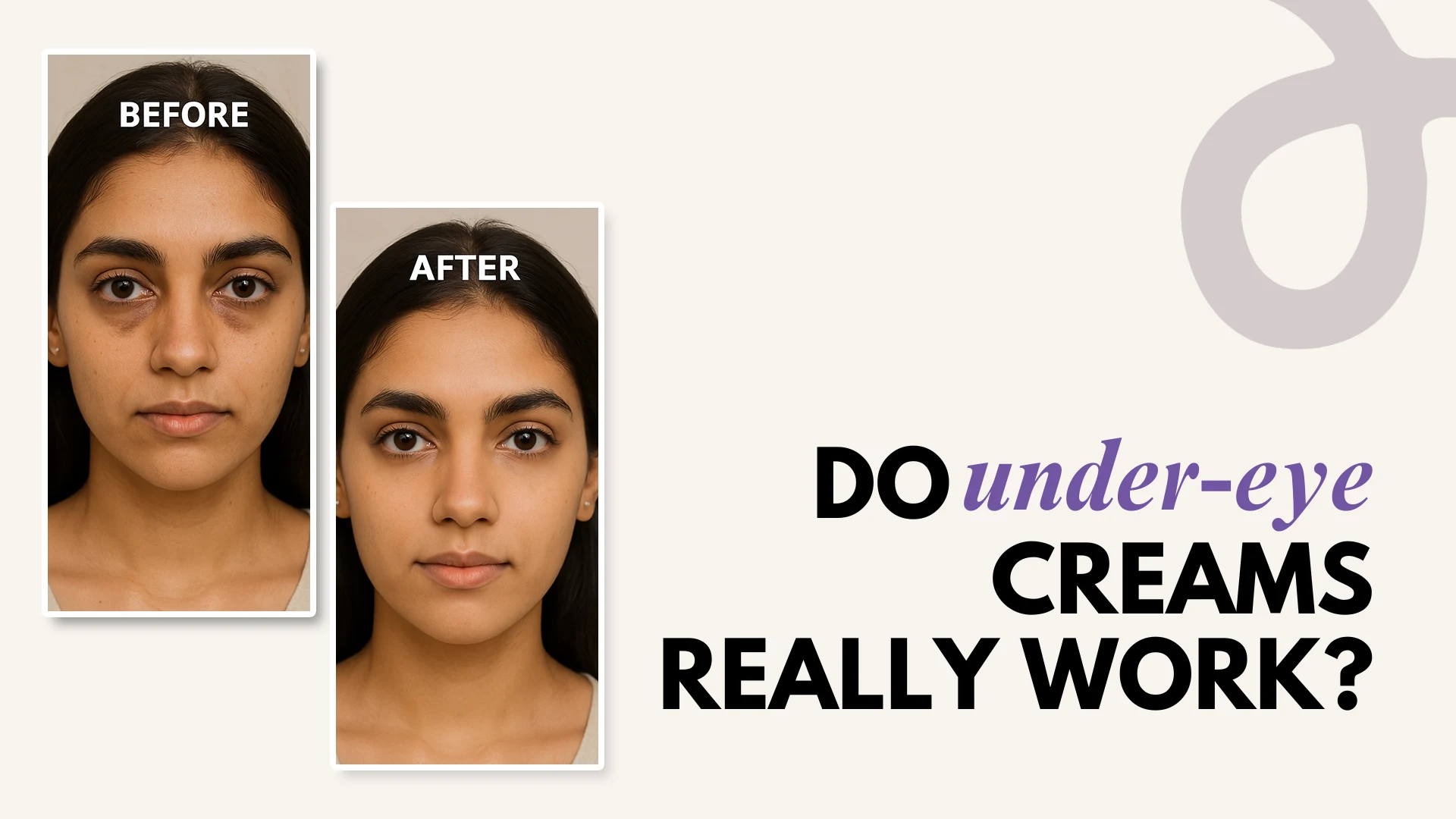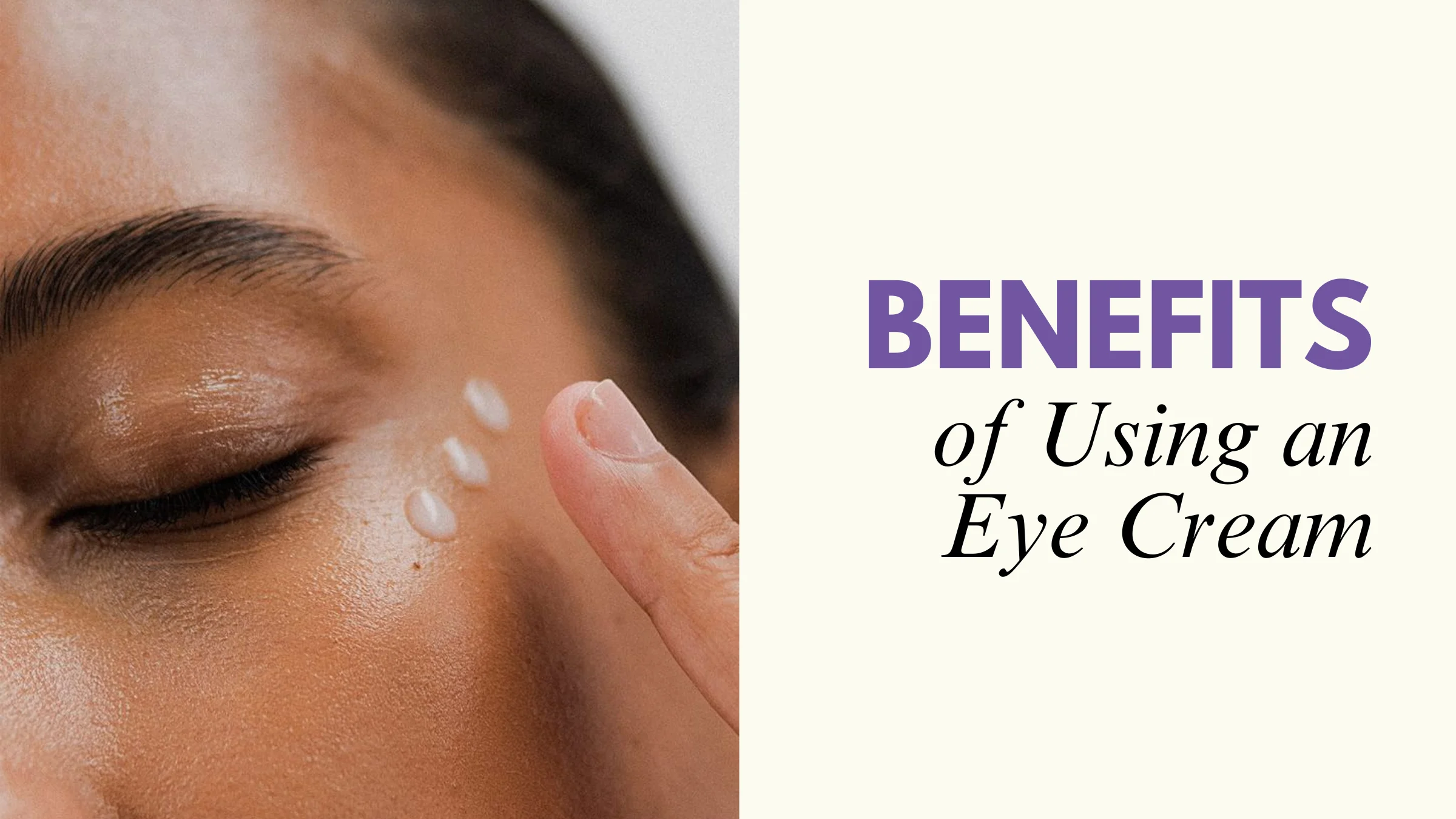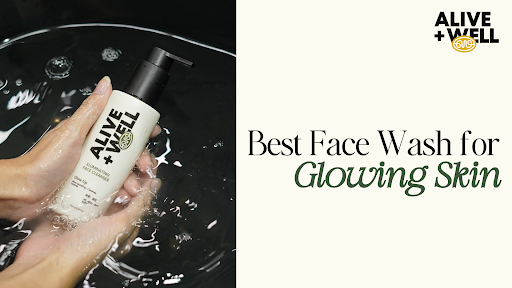Do under-eye creams really work?
Do you ever stare in the mirror and wonder if an under-eye cream could be your secret weapon against tired and lifeless eyes? The skincare industry is filled with under-eye creams that promise to banish dark circles, smooth fine lines, and erase puffiness. But do these tiny tubes really deliver? Let’s dig deeper into under-eye creams’ science, ingredients, and behind-the-scenes.
What Makes Eye Creams Work (or Not)?
Under-eye creams can be effective for certain concerns, such as puffiness, fine lines, and mild dark circles, but their results depend on several factors.
- Active Ingredients: Creams formulated with ingredients like caffeine, retinoids, vitamin C, peptides, hyaluronic acid, and ceramides have shown promising results in studies to improve hydration, elasticity, and collagen production, leading to reduced puffiness and pigmentation.
- Targeted Formula: The skin around the eyes is thinner and more delicate than the rest of the face, making it more prone to dryness and irritation. Eye creams are tailored to be gentler and intensely hydrating than regular facial moisturizers.
- Consistent Use: Visible results from under-eye creams usually require consistent, long-term use for several weeks. Instant results are unlikely; deeper pigmentation or hereditary issues may not respond well to topical creams alone.
What Does the Research Say?
- Hydration & Elasticity: Studies indicate that creams infused with hyaluronic acid and similar actives can significantly improve hydration and even reduce wrinkle depth after 2-3 months of regular use.
- Pigmentation: Under-eye serums with ingredients like niacinamide, vitamin C, and caffeine have shown changes in reducing pigment-related dark circles.
- Wrinkles & Fine Lines: Retinoid-based eye creams, when used consistently, have been proven to diminish the appearance of fine lines and wrinkles around the eyes.
Limitations: What Eye Creams Can’t Do?
- Genetics & Deep Shadows: Topical creams are little to no effective towards Dark circles that are born out of genetics or deep-set eyes.
- Instant Results: Visible improvements require consistent use over several weeks or months.
- Lifestyle Substitute: Eye creams contribute to a fresher under-eye area, but can’t replace proper sleep, hydration, and a healthy lifestyle.
How to Maximize Results?
- Right Ingredients: Opt for under-eye creams with science-backed actives like hyaluronic acid, retinol, vitamin C, niacinamide, and caffeine.
- Consistency: Use morning and night for best results. For retinoid-based creams, apply only at night, as they can increase sensitivity towards sunlight.
- Gentle Application: Don’t rub, just tap gently with your finger to avoid tugging at the delicate skin.
- Sun Protection: Some ingredients (like retinol) make skin more sensitive to sunlight, so always use sunscreen during the day.
With their lightweight textures, targeted actives, and science-backed benefits, under-eye cream remains a popular choice for individuals seeking to address common concerns like dark circles, puffiness, and wrinkles. However, it’s not a magic wand to reverse genetic dark circles or hollow eyes. Aim for targeted formulations with potent actives as one component of a holistic approach to eye-area rejuvenation.
FAQ
Does under eye cream actually work?
Eye creams can improve the quality of the skin around your eyes, but they can’t fix every undereye concern. If you aren’t satisfied with the results from regular eye cream use after a few months, your dermatologist may recommend an in-office procedure to tackle the issue.
Is it necessary to use under eye cream?
Not using eye cream is fine, but neglecting the eye area altogether is not. Skipping out on applying moisturising, nourishing and protective ingredients to the eye area can result in worsening concerns, dryness and more visible fine lines and wrinkles.
Does anything actually work for under eye bags?
Therapies. Various wrinkle treatments are used to improve the appearance of puffiness under the eyes. These include laser resurfacing, chemical peels and fillers, which may improve skin tone, tighten the skin and rejuvenate the under-eye area.
Does anything actually get rid of dark circles?
Your doctor may suggest prescription creams and other treatments to improve the look of your skin. Laser therapy or chemical peels can be helpful to some people. Injectable fillers can smooth the hollows that cause shadows. Other options are platelet-rich plasma injections and surgery to reduce puffy lids.
How long does it take for under eye cream to work?
It generally takes about 4-8 weeks of consistent use to see noticeable results from an under-eye cream. However, some improvements, like increased hydration, may be visible within a few days.
Do under eye gels really work?
The eye gels won’t permanently fix your skin, they work to boost and improve your under eyes over time.
What age should I start using under eye cream?
Early 20s (20–25) This is the ideal time to begin preventive care. Start using a hydrating eye cream that contains Niacinamide, Vitamin C, or Caffeine. These ingredients support skin tone, reduce puffiness, and improve brightness before signs of aging set in.



